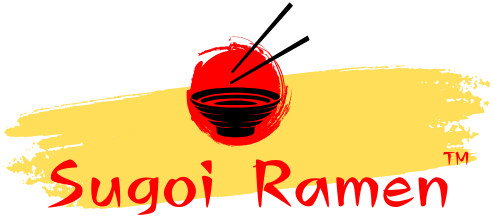The art of crafting authentic Japanese ramen lies in the meticulous selection of ingredients. Ramen, a dish that has captured the hearts of food enthusiasts globally, is a symphony of flavors and textures. To replicate the authentic taste of Japanese ramen, understanding its core ingredients is essential. Here, we dive into the top 5 ramen ingredients that define the soul of this iconic dish.
1. Ramen Noodles: The Heart of the Dish

Ramen noodles are the backbone of this culinary masterpiece. Made from wheat flour, salt, water, and an alkaline mineral water called kansui, these noodles have a unique texture and elasticity that set them apart.
- Types of Ramen Noodles: Ramen noodles come in various forms—curly, straight, thick, and thin. Each type complements different broth styles. For instance, thin noodles pair well with light broths like shio or shoyu, while thicker noodles hold up to rich tonkotsu broth.
- Kansui’s Role: The addition of kansui gives ramen noodles their distinct chewy texture and yellowish hue, making them unmistakably ramen.
2. Broth: The Soul of Ramen
The broth is the element that defines the depth and complexity of ramen. A labor of love, authentic ramen broth is simmered for hours to extract intense flavors.
- Shoyu (Soy Sauce): A savory, slightly tangy broth, often made with chicken or vegetable base, infused with soy sauce for umami-rich depth.
- Miso: This fermented soybean paste brings a nutty, creamy flavor. Miso ramen is hearty and ideal for colder weather.
- Shio (Salt): A lighter, delicate broth made with a simple salt base, allowing other ingredients to shine.
- Tonkotsu (Pork Bone): A creamy, rich broth achieved by simmering pork bones for hours. It’s a favorite for its velvety texture and robust flavor.
3. Tare: The Flavor Concentrate
Tare is the concentrated seasoning that customizes the ramen’s base flavor. It’s added to the bowl before pouring in the broth, acting as the backbone of the dish’s flavor profile.
- Types of Tare:
- Shoyu Tare: A blend of soy sauce, sake, and mirin, adding a salty and slightly sweet dimension.
- Miso Tare: Crafted with various miso types, combined with garlic, sesame, and chili for added depth.
- Shio Tare: Made with salt and a touch of dashi, perfect for lighter broths.
Tare ensures that every spoonful of ramen carries a harmonious balance of flavor.
4. Protein Toppings: Enhancing Texture and Flavor
Protein toppings add substance and complement the broth and noodles. Common options include:
- Chashu Pork: Tender, melt-in-your-mouth slices of marinated pork belly, braised in soy sauce, sake, and sugar.
- Ajitsuke Tamago (Marinated Egg): Soft-boiled eggs marinated in soy sauce and mirin, offering a creamy, savory bite.
- Chicken or Beef: Some ramen styles feature grilled or shredded chicken or beef for added variety.
- Tofu and Mushrooms: Popular in vegetarian ramen, these toppings absorb the flavors of the broth beautifully.
5. Aromatics and Garnishes: The Final Touch
No bowl of ramen is complete without its signature aromatics and garnishes. These ingredients enhance the overall sensory experience:
- Green Onions: Thinly sliced scallions add a fresh, zesty element.
- Nori (Seaweed): Sheets of roasted seaweed impart a subtle briny flavor.
- Sesame Seeds: Toasted sesame seeds add nuttiness and texture.
- Bean Sprouts: These provide a satisfying crunch, balancing the dish’s richness.
- Garlic and Ginger: Often grated or minced, these add warmth and a spicy kick.
Crafting the Perfect Ramen: Tips for Success

1. Balancing Flavor Profiles
Achieving authentic ramen requires balancing saltiness, sweetness, bitterness, and umami. Experimenting with tare and broth ratios ensures harmony in every bite.
2. Layering Ingredients
Each ingredient in ramen has a role to play. Layering them thoughtfully—from tare at the bottom to noodles, broth, and toppings—ensures a cohesive dish.
3. Customizing Your Bowl
Ramen is endlessly versatile. Customize with chili oil for heat, vinegar for tang, or extra toppings like bamboo shoots and pickled vegetables for variety.
Conclusion
Creating the perfect bowl of ramen begins with selecting the top 5 ramen ingredients—noodles, broth, tare, protein toppings, and aromatics. Each component is an essential puzzle piece, contributing to the dish’s authenticity and depth. With these ingredients and techniques, you can craft a bowl of ramen that rivals those found in Japan.
FAQs
Q1. What are the essential ingredients for authentic ramen?
The top ingredients include ramen noodles, broth, tare, protein toppings like chashu pork, and garnishes such as green onions and nori.
Q2. What makes ramen noodles unique?
Ramen noodles use kansui, which gives them a chewy texture and yellowish color, distinguishing them from other noodles.
Q3. How is tare used in ramen?
Tare is a seasoning base added to the bowl before the broth, enhancing the ramen’s flavor with shoyu, miso, or shio profiles.
Q4. What toppings can be added to ramen?
Common toppings include chashu pork, marinated eggs, tofu, mushrooms, green onions, sesame seeds, and seaweed.
Q5. Can ramen be customized?
Yes, ramen is highly customizable with different broths, toppings, and condiments like chili oil or vinegar to suit your taste.







